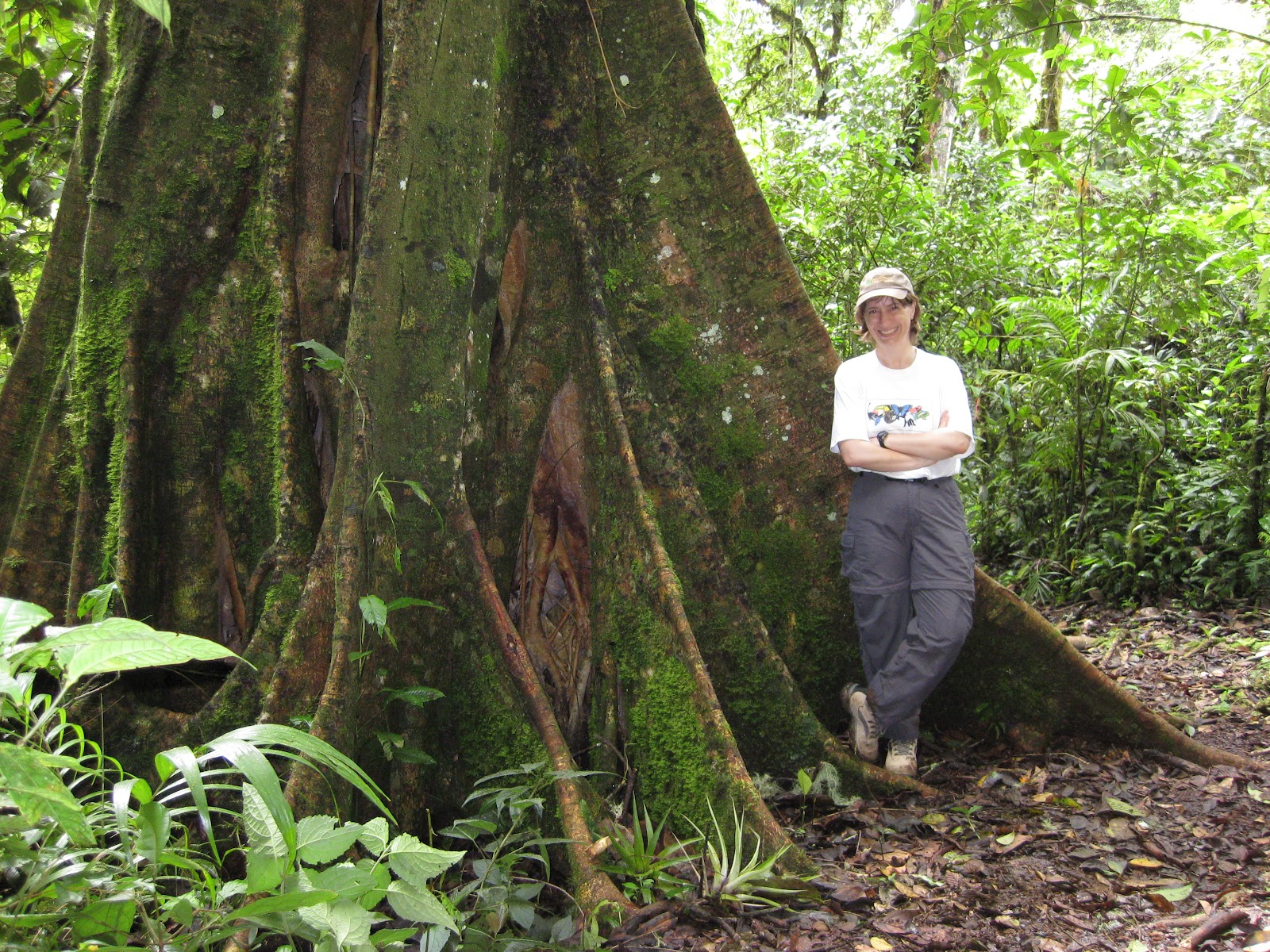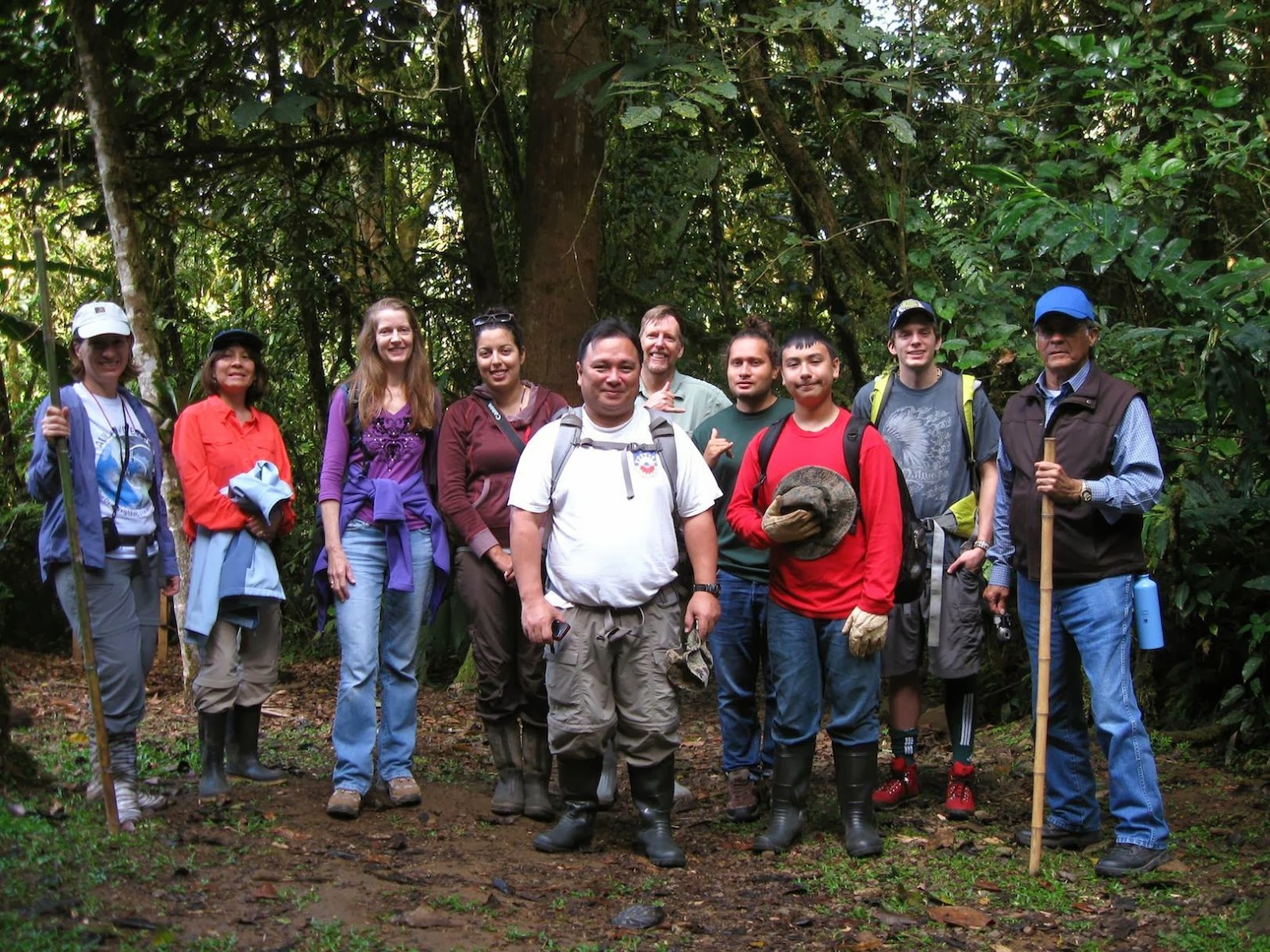 |
| Me and one of my old friends at Las Cruces. |
Those of you who follow my blog may remember that every other year I return to Las Cruces Biological Station in southern Costa Rica to participate in the Native American and Pacific Islander Research Experience (NAPIRE) Program.
Funded by NSF and LSAMP, this 8-week adventure brings together Native American and Pacific Islander undergraduate students, who conduct independent research under the guidance of experienced field ecologists. Students identify questions and hypotheses, design and implement their own experiment, and analyze, interpret, and present the results. All of this in the context of the magnificent mid-elevation tropical forest that characterizes the mountains of southern Costa Rica.
I helped set up NAPIRE back in 2006, when I was still working full time for Duke University and the Organization for Tropical Studies. After accepting my current position at Avila University, I’ve returned every other year to participate in NAPIRE as a research mentor. This year I’ve taken on a new and somewhat daunting challenge: I will be co-coordinating the program with Barbara Dugelby. Our team includes two teaching assistants, Lelemia Irvine, a kukupu o ka aina of Hawaii, and Nicole Kenote, a member of the Menominee Indian Tribe of Wisconsin.
 |
| NAPIRE Best Practices workshop in January 2014. Diverse cultures, diverse minds, diverse forests. Photo courtesy of Lelemia Irvine. |
When the 2014 NAPIRE community is complete, it will consist of 20 students from various Native American Tribes and Pacific Islander Peoples, as well as 10 mentors from around the world. In addition, we will be welcoming mentors from our students’ home institutions as well as a tribal elder, Dr. Don Pepion, and a cultural practitioner, Ku'umeaaloha Gomes.
I have long had an instinctive love for NAPIRE. From the first time I heard about the program, I understood that this is one of those rare initiatives that could truly transform the world. Not from one day to the next, of course, but by planting seeds of change capable of germinating and flourishing long after the 8-week experience has concluded. This because NAPIRE not only teaches students science, it seeks to bridge the gap between scientific and indigenous knowledge systems — a gap that all too often seems insurmountable, abyssal in its depths, ready to swallow anyone who attempts to cross it.
As part of my personal preparation for this summer’s program, I have begun reading Grandmothers Counsel the World, a book by Carol Schaefer that consolidates the experience and wisdom of 13 women elders from different indigenous tribes.
In the foreword, Winona LaDuke makes a compelling argument that the current paradigm, driven in part by a Western approach to science, cannot show us the way out of the planetary crisis, because it is precisely this paradigm that created the problem the first place.
This is a difficult argument for an ecologist to read, even more difficult when the words sting with the weight of truth.
And so the question sticks in my mind:
Can science solve the problems science has created?
I have a feeling I will be mulling over this one for some time, perhaps the entire summer and beyond.
On the one hand, scientific advancement has allowed us to exploit the planet in a way never before seen in history.
At the same time, science has illuminated the extent of the damage we have done, and continue to do. Data gathered by scientists has often urged us into decisive action, as for example with the Clean Air Act of 1970 and the Montreal Protocol (1987).
Science is extraordinarily powerful when it comes to deciphering the inner workings of the natural world, yet science offers little in terms of guidance regarding what to do with that information.
Where, then, can we turn for such sorely needed guidance?
Schaefer and LaDuke point to the Grandmothers and their collective wisdom, a rich reservoir of knowledge that spans hundreds, even thousands, of years. Indigenous knowledge systems, they argue, are not simply a place to start. They should occupy a central role in our collective effort to ensure a better, more sustainable future for all of humanity.
All of this brings me back to NAPIRE, a relatively modest effort to create a playing field on which scientific and indigenous knowledge systems interact on equal terms. Every summer I’ve joined NAPIRE has been a new adventure, each iteration distinct in many important ways from the last. Yet no matter the particular experiences of a given summer, I always come away with a deeper appreciation of NAPIRE students and the many cultures they represent. I know the much of the future rests in their hands, and that thought gives me a lot of hope.
This is one of many reasons why I am so excited that the door to NAPIRE 2014 is about to open, allowing me to participate in the many challenges and unique gifts this opportunity has to offer. I invite you to join me as a virtual companion when I step through that door, as the NAPIRE experience will be the focus of many posts from now through early August.
This is one adventure you do not want to miss.
If you would like to know more about the International Council of Thirteen Indigenous Grandmothers, please visit their webpage.

